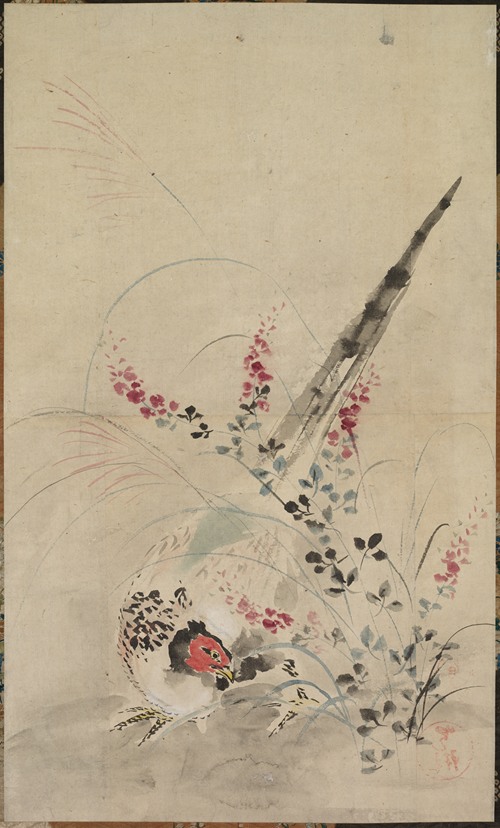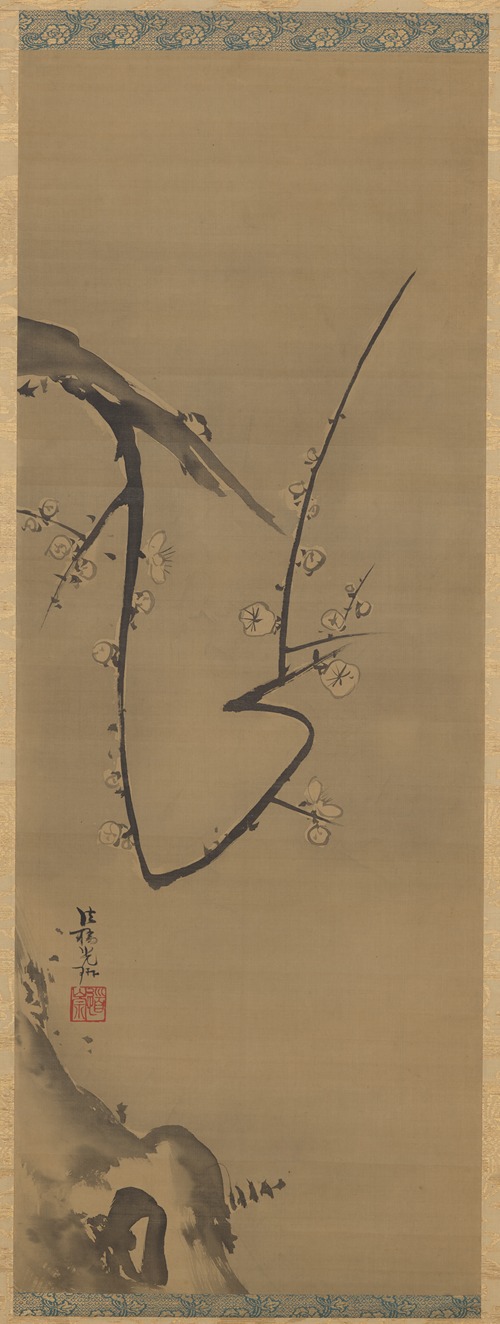


Ogata Kōrin was a Japanese landscape illustrator, lacquerer, painter, and textile designer of the Rinpa School.
Kōrin is best known for his byōbu folding screens, such as Irises and Red and White Plum Blossoms (both registered National Treasures), and his paintings on ceramics and lacquerware produced by his brother Kenzan (1663–1743). Also a prolific designer, he worked with a variety of decorative and practical objects, such as round fans, makie writing boxes or inrō medicine cases.
He is also credited with reviving and consolidating the Rinpa school of Japanese painting, fifty years after its foundation by Hon'ami Kōetsu (1558–1637) and Tawaraya Sōtatsu (c. 1570 – c. 1640). In fact the term "Rinpa", coined in the Meiji period, means "school of [Kō]rin". In particular he had a lasting influence on Sakai Hōitsu (1761–1828), who replicated many of his paintings and popularized his work, organizing the first exhibition of Kōrin's paintings at the hundredth anniversary of his death.
Kōrin was born in Kyoto into a wealthy merchant family, dedicated to the design and sale of fine textiles. The family business, named Karigane-ya, catered to the aristocratic women of the city. His father, Ogata Sōken (1621–1687), who was a noted calligrapher in the style of Kōetsu and patron of Noh theater, introduced his sons to the arts. Kōrin was the second son of Sōken. His younger brother Kenzan was a celebrated potter and painter in his own right, with whom he collaborated frequently. Kōrin studied under Yamamoto Soken (active ca. 1683–1706) of the Kanō school, Kano Tsunenobu (1636–1713) and Sumiyoshi Gukei (1631–1705), but his biggest influences were his predecessors Hon'ami Kōetsu and Tawaraya Sōtatsu.
Sōken died in 1687, and the elder brother took over the family business, leaving Kōrin and Kenzan free to enjoy a considerable inheritance. After this, Kōrin led a very active social life, but his spending ran him into financial difficulties the following years, partly due to loans made to feudal lords. This forced him to pawn some of his treasured possessions. A letter sent by him to a pawnbroker in 1694 regarding "one writing box with deer by Kōetsu" and "one Shigaraki ware water jar with lacquer lid" survives.
Kōrin established himself as an artist only late in life. In 1701, he was awarded the honorific title of hokkyō ("Bridge of the Dharma"), the third highest rank awarded to Buddhist artists, and in 1704 he moved to Edo, where lucrative commissions were more readily available. His early masterpieces, such as his Irises are generally dated to this period. During this time, he also had the opportunity to study the ink paintings of medieval monk painters Sesshū Tōyō (1420–1506) and Sesson Shukei (c. 1504 – c. 1589). These are seen as important influences in his work from that period, the Rough Waves painting for example.
In 1709, he moved back to Kyoto. He built a house with an atelier on Shinmachi street in 1712 and lived there the last five years of his life. His masterpieces from that last period, such as the Red and White Plum Blossoms screens, are thought to have been painted there.
Kōrin died famous but impoverished on 2 June 1716, at the age of 59. His grave is located at the Myōken-ji temple in Kyoto. His chief pupils were Tatebayashi Kagei, Watanabe Shikō and Fukae Rōshu, but the present knowledge and appreciation of his work are largely due to the early efforts of his brother Kenzan and later Sakai Hōitsu, who brought about a revival of Kōrin's style.


